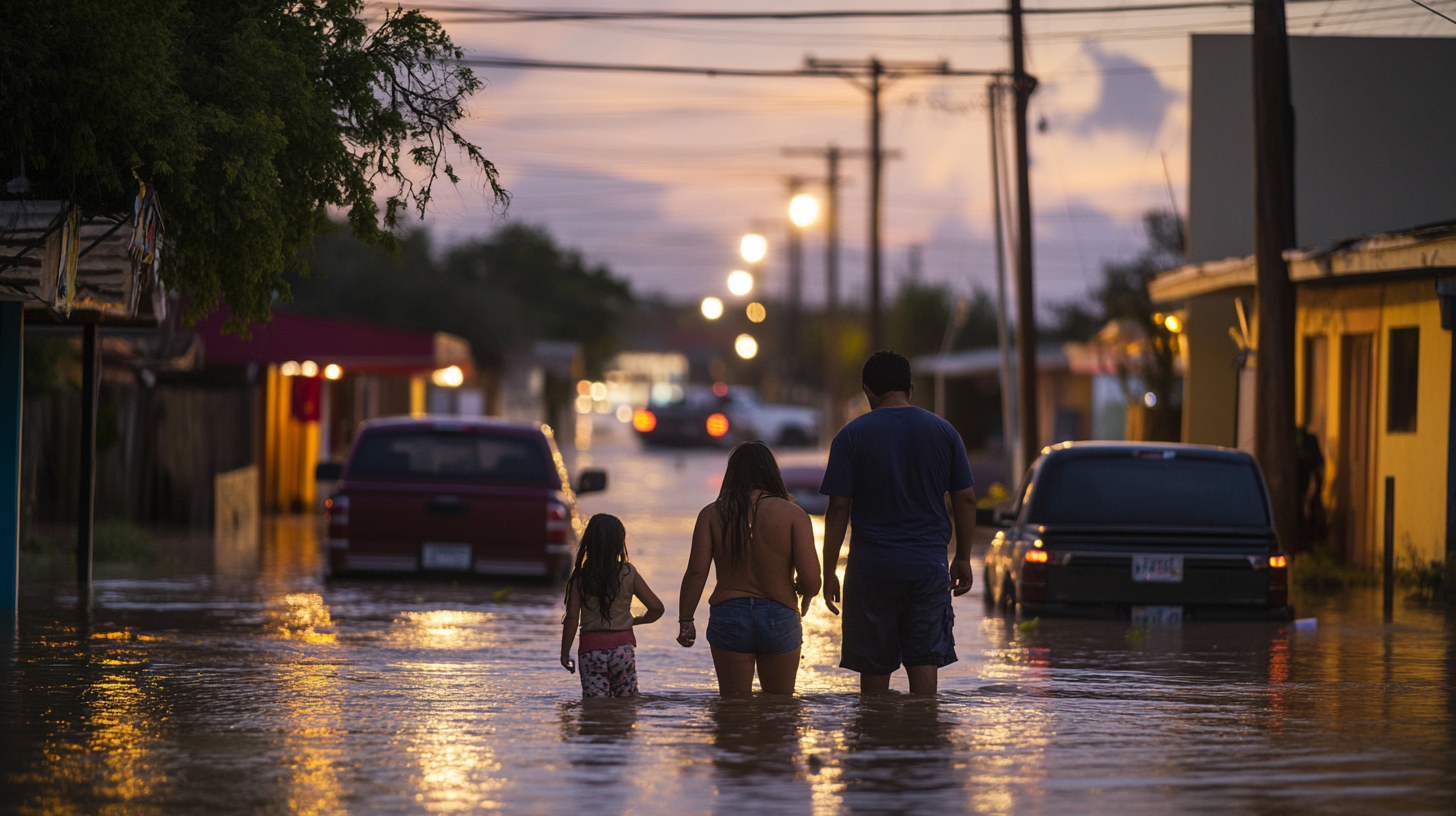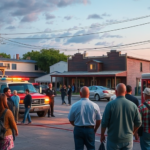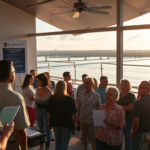La Feria Residents Trapped by Floodwaters: A Community’s Resilience in the Face of Adversity
In the Rio Grande Valley, relentless storms have once again tested the resilience of local communities, leaving neighborhoods submerged and residents trapped in their homes. La Feria, a small South Texas town, witnessed severe flooding following Thursday’s thunderstorms, disrupting lives and underscoring the persistent challenges posed by extreme weather events in the region.
Flooding Strands Residents
As the rain poured down, neighborhoods across La Feria transformed into impromptu lakes, with water levels rising several inches inside homes. The peculiarity of this situation lies not only in its impact but also in its recurrence. This isn’t the first time residents have faced the wrath of such natural calamities; yet, the severity of this event was unexpected.
The Pecina family, like many others, found themselves battling the unforgiving torrents. “When the water started coming in, we used towels, blankets, even rugs to try and block it from entering our home,” recounted Raquel Pecina. Despite their efforts, they soon realized it was an uphill battle. “Once the water reached our ankles, my husband said, ‘I think we should really get out of here.’ We just grabbed what we could and left.”
Community Engagement and Response
The response from local officials was swift, with Cameron County and La Feria city authorities urging residents to avoid traveling on flooded roads and to report property damage online. Such measures are crucial, not only for immediate safety but also for long-term recovery efforts. “Public safety is our priority,” emphasized a county spokesperson. “We are urging all Valley residents to report damage so that state authorities can expedite recovery operations.”
The flooding in La Feria is part of a broader issue plaguing the Valley. Just across the border in Reynosa, the same storms resulted in one death and nearly 700 water rescues. The scope of these challenges highlights the need for robust infrastructure and emergency preparedness in regions prone to severe weather.
The Broader Impact on the Rio Grande Valley
The ramifications of the storms extend beyond immediate property damage. Local sports and community activities were notably disrupted. The RGV Vipers’ playoff-clinching game went ahead, but the ongoing severe weather postponed the series opener between the UTRGV Vaqueros and Texas A&M – Corpus Christi. Such disruptions are reminders of the broader societal impacts of extreme weather.
Furthermore, transportation infrastructure faced scrutiny as the Texas Department of Transportation announced repairs on the I-69E overpass in Harlingen due to visible cracks. While officials reassured the public that the overpass remains safe, such incidents highlight the region’s vulnerability and the critical need for proactive maintenance strategies.
A Reminder of Past Challenges
For many, the current situation revives memories of past events, such as Hurricane Dolly, which similarly inundated the region, highlighting the Rio Grande Valley’s susceptibility to flooding. Asael Pecina remarked that although their home has flooded before, they have never experienced anything quite like this. “Neighbors around here are seeing four to six inches of floodwater inside their homes,” he noted, emphasizing the unprecedented nature of the event.
The community’s resilience in the face of such adversity is evident, with residents banding together to support one another. As Raquel Pecina aptly put it, “Thank God we are alive. We can always replace stuff.”
Looking Forward: Building Resilient Communities
As temperatures are expected to rise into the 90s with breezy conditions, the immediate threat might seem to have passed, but the urgency of addressing long-term solutions remains. Community leaders and policymakers are urged to invest in sustainable infrastructure that can withstand future storms.
Dr. Juan Ramirez, a climatologist at the University of Texas Rio Grande Valley, suggests that collaborative efforts between governmental entities and local communities are vital. “We need to prioritize projects that enhance flood control and involve the community in resilience planning. The challenges we face today require collective action and forward-thinking solutions.”
Resources for Recovery and Support
To support recovery efforts, Cameron County officials have also begun organizing sessions to assist residents with filling out damage reports. Online resources are available for those unable to attend in person, ensuring that no resident is left behind in the recovery process.
As Valley residents navigate the aftermath, the importance of community interest and local impact becomes glaringly obvious. While rebuilding and recovery efforts take shape, South Texas can emerge stronger by learning from these experiences and fortifying itself against the ever-present threats that nature poses.
For continuous updates and local resources, residents are encouraged to follow RGV news and community channels that provide real-time information and support.
In times of crisis, the spirit of community prevails, and the trials faced by La Feria and its residents are a poignant reminder of the strength found in unity and resilience.







